Whiskey Men as Firefighters
Foreword: Dedicated to distillers, liquor dealers, saloonkeepers, bartenders and others associated with pre-Prohibition liquor, this website frequently has documented their many contributions to the cities and towns in which they lived.Among those was service on local volunteer fire departments. This post tells in brief the stories of five firefighting “whiskey men,” including a father and son, from, as the song goes, “California to the New York Island.”
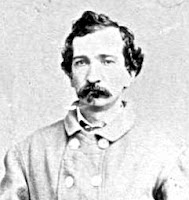 Born about 1831 in Ireland, at the age of 17 or so John Keenan emigrated across the Atlantic, reputedly landing in Mexico about 1848 and working his way to Texas where for a time he was a Texas Ranger. From there he moved to California, settling in Sacramento. The energetic Keenan hit town like a tornado. After a large fire destroyed many of Sacramento’s saloons, the Irishman sensed opportunity. He raced to a nearby settlement where he purchased a prefabricated wooden building on the Sacramento River and had it floated to town. With the help of his wife, Keenan decorated it, calling it “The Fashion Saloon.” He soon moved to a more substantial building shown here.
Born about 1831 in Ireland, at the age of 17 or so John Keenan emigrated across the Atlantic, reputedly landing in Mexico about 1848 and working his way to Texas where for a time he was a Texas Ranger. From there he moved to California, settling in Sacramento. The energetic Keenan hit town like a tornado. After a large fire destroyed many of Sacramento’s saloons, the Irishman sensed opportunity. He raced to a nearby settlement where he purchased a prefabricated wooden building on the Sacramento River and had it floated to town. With the help of his wife, Keenan decorated it, calling it “The Fashion Saloon.” He soon moved to a more substantial building shown here.
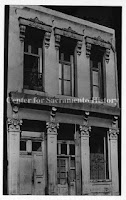 Well aware of the dangers posed to Sacramento by its frequent fires, Keenan decided to assembled a local firefighting force. It was a canny decision for someone like Keenan who was seeking broad community recognition. Volunteer fire brigades served several purposes in those times. Not only did their members provide a level of trained “first responders” to battle conflagrations, but also served as fraternal organizations. Fire halls not only contained the requisite fire fighting equipment but also large spaces for socializing. Crew members could be found there at all hours playing cards, throwing darts or just chatting. The commanders of such units were elected by the members and held in high regard by townsfolk.
Well aware of the dangers posed to Sacramento by its frequent fires, Keenan decided to assembled a local firefighting force. It was a canny decision for someone like Keenan who was seeking broad community recognition. Volunteer fire brigades served several purposes in those times. Not only did their members provide a level of trained “first responders” to battle conflagrations, but also served as fraternal organizations. Fire halls not only contained the requisite fire fighting equipment but also large spaces for socializing. Crew members could be found there at all hours playing cards, throwing darts or just chatting. The commanders of such units were elected by the members and held in high regard by townsfolk.
 Keenan’s efforts resulted with his being elected its chief. A photograph exists of the saloonkeeper, dressed in his uniform, standing casually against a pillar on which sits his helmet, identifying J.C. Keenan as chief of the fire unit. Between them is a large horn, used for alerting the firemen and directing them when fighting a fire. A downside of this honor was that the chief and other ranking members were expected to pay for equipment. With Keenan’s wealth gained from the Fashion Saloon such expenditures were easily borne.
Keenan’s efforts resulted with his being elected its chief. A photograph exists of the saloonkeeper, dressed in his uniform, standing casually against a pillar on which sits his helmet, identifying J.C. Keenan as chief of the fire unit. Between them is a large horn, used for alerting the firemen and directing them when fighting a fire. A downside of this honor was that the chief and other ranking members were expected to pay for equipment. With Keenan’s wealth gained from the Fashion Saloon such expenditures were easily borne.
******
An 1894 directory of Houston, Texas, businesses, advised visitors to the city to pay a call at the drinking establishment at 1105 Congress Avenue in order to view the bar at the rear, calling it “particularly striking and remarkable” for its decoration of “sea shells and marine curiosities.” The Seashell Bar was the creation of C. W. and Charles C. Ruger, father and son saloonkeepers also known to the community for their dedication to firefighting.
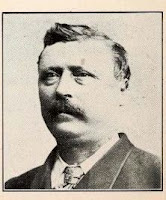 C. W. Rugers, shown right, was one of Houston’s first volunteer firefighters, attached to Liberty Department No. 2. He rose to be foreman (commander) of the company and later its representative to the central fireman’s body. C.W. had sufficient wealth to fund these activities. An immigrant from Netherlands, he started as a grocer but soon moved to the more lucrative liquor trade and became wealthy.
C. W. Rugers, shown right, was one of Houston’s first volunteer firefighters, attached to Liberty Department No. 2. He rose to be foreman (commander) of the company and later its representative to the central fireman’s body. C.W. had sufficient wealth to fund these activities. An immigrant from Netherlands, he started as a grocer but soon moved to the more lucrative liquor trade and became wealthy.
When his son, Charlie, shown left, grew to maturity, his father took him into the business. C.W. apparently was a difficult taskmaster, expecting a great deal from his son. A contemporary biography signaled that Charlie had not had an easy transition from a boy to a businessman: “At a tender age he had duties thrust upon him that gave him experience that few young men encounter. He has has had a ‘rough road’ to travel on the highway of life, but out of it he stands today strong and robust, ready to meet any future adversities that may be lying in wait for him.”
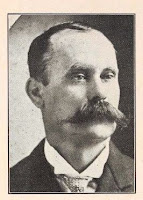 Despite whatever his relationship with his father, Charlie followed his father’s example and was an enthusiastic volunteer firefighter. He was a member of the Siebert No. 19 Company, formed in 1894. It was the last volunteer group organized in the “Old Department,” before paid fire service in Houston. The company featured a non-motorized hose wagon that had to be rolled by hand to the fires. “Strong and robust” as Charlie was said to be, that activity still was a strain and he may not have been displeased when Siebert No. 19 was disbanded.
Despite whatever his relationship with his father, Charlie followed his father’s example and was an enthusiastic volunteer firefighter. He was a member of the Siebert No. 19 Company, formed in 1894. It was the last volunteer group organized in the “Old Department,” before paid fire service in Houston. The company featured a non-motorized hose wagon that had to be rolled by hand to the fires. “Strong and robust” as Charlie was said to be, that activity still was a strain and he may not have been displeased when Siebert No. 19 was disbanded.
******
John Stump was a native-born American, coming into life in Cumberland, Maryland, shown below, in 1874 to parents both of whom had been born in that state. He appears to have entered the liquor trade at an early age, recorded as a 21-year-old saloonkeeper. By 1900, according to census data, Stump had disposed of the saloon and was concentrating his energies as a wholesale liquor dealer.
He soon embarked on an active political career, using his role as a volunteer fireman as a launching pad. Because of the many frame buildings in Cumberland and the presence of a number of glass factories, fires were common. Stump had risen to the position of acting chief of the Cumberland volunteers when a major fire threatened downtown nearby Frostburg, Maryland. He sent his fire fighters to help extinguished the blaze, gaining praise from the local press. Subsequently Stump was elected president of the Allegany-Garrett Counties Volunteer & Rescue Association. He also became a prominent member of the Firemen’s Association of Maryland, becoming its state president in 1898.
Stump, a Republican, then parlayed that post into running and being elected to the Maryland House of Delegates from Allegany County, serving from 1904 to 1906. He also served terms as both the town’s finance commissioner and its street and sewer commissioner. Despite his Republican connections, National Prohibition came down just as hard on him as on Democrats. Stump was forced to close up his prosperous liquor business in 1919. The 1920 Census found him with no occupation listed.
******
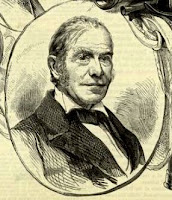 Perhaps the premier “whiskey man” first responder was Philip Engs, a New York City liquor millionaire. Born in Newport, Rhode Island, in 1789, as a youth he came to New York to work. His passion, however, was fighting fires. While still in his teens he joined Fulton Engine Co. No. 21, a volunteer fire company organized in 1795 that originally met in Crooks Tavern until it acquired a fire house Engs rose rapidly in the ranks of his fellow firefighters, after three years chosen secretary of the company and by 1815, age 26, elected foreman, a position he held until 1820. Subsequently he became proprietor of a major liquor business.
Perhaps the premier “whiskey man” first responder was Philip Engs, a New York City liquor millionaire. Born in Newport, Rhode Island, in 1789, as a youth he came to New York to work. His passion, however, was fighting fires. While still in his teens he joined Fulton Engine Co. No. 21, a volunteer fire company organized in 1795 that originally met in Crooks Tavern until it acquired a fire house Engs rose rapidly in the ranks of his fellow firefighters, after three years chosen secretary of the company and by 1815, age 26, elected foreman, a position he held until 1820. Subsequently he became proprietor of a major liquor business.
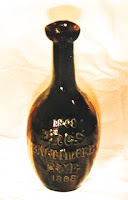 Engs’ headquarters was at 131 Front Street in Manhattan. From there he not only carried on a vigorous wholesale trade, he also was operating as a “rectifier,” that is, blending raw whiskeys to achieve a particular taste and color. As he advanced in wealth Engs never forgot his first love — fighting fires. At the time he had joined the Fulton firefighters, the scene of a blaze often was chaotic. Volunteers companies often fought among themselves for prominence while the flames raged on. Engs soon recognized the need for professionalized fire services in New York. Accordingly, he became a driving force behind a paid fire department, as one observer ironically put it, “sweeping away the romantic past.”
Engs’ headquarters was at 131 Front Street in Manhattan. From there he not only carried on a vigorous wholesale trade, he also was operating as a “rectifier,” that is, blending raw whiskeys to achieve a particular taste and color. As he advanced in wealth Engs never forgot his first love — fighting fires. At the time he had joined the Fulton firefighters, the scene of a blaze often was chaotic. Volunteers companies often fought among themselves for prominence while the flames raged on. Engs soon recognized the need for professionalized fire services in New York. Accordingly, he became a driving force behind a paid fire department, as one observer ironically put it, “sweeping away the romantic past.”
In 1865 New York Legislature in 1865 created a professional New York Fire Department was born. More than 3,800 volunteers were expunged from the rolls. Among first five fire commissioners appointed by the governor was Philip W. Engs. He amply had earned the post. Earlier, with other investors he had incorporated “The Fireman’s Insurance Fund” to insure against loss or damage by fire and to afford charitable funds for firefighters and their families. He also served a term as president of the Association of Exempt Firemen, a firemen’s social club.
Those and other Engs’ initiatives figured prominently in an 1887 history of Big Apple firefighting called “Our Firemen.” The book contained the portrait of the 76-year-old Commissioner Engs shown above. The liquor dealer also was a historian of New York’s fire service. Although he never published it, an Engs’ manuscript has been cited as providing “most of the facts” about the early days of New York City firefighting for subsequent accounts.
Note: This website contains longer articles on each of the whiskey men described here: John Keenan, December 6, 2020; The Rugers, January 1, 2015; John Stump, June 14, 1914, and Philip Engs, January 7, 2017.

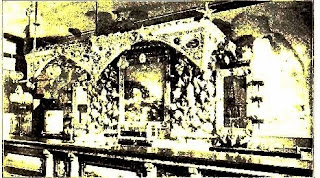

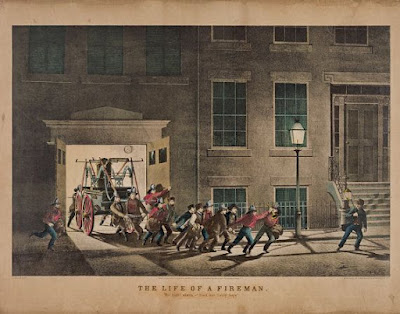
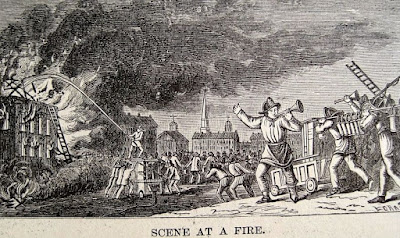
 It’s a bit convoluted. But we’ll get there. The bottom line is this… Existing brands (Rossville Union Rye and George Remus) made by MGP for MGP (not 3rd party) are now to be referred as being made at ‘Ross and Squibb Distillery’. The main gist, if it’s made at MGP and not sold to an […]
It’s a bit convoluted. But we’ll get there. The bottom line is this… Existing brands (Rossville Union Rye and George Remus) made by MGP for MGP (not 3rd party) are now to be referred as being made at ‘Ross and Squibb Distillery’. The main gist, if it’s made at MGP and not sold to an […]